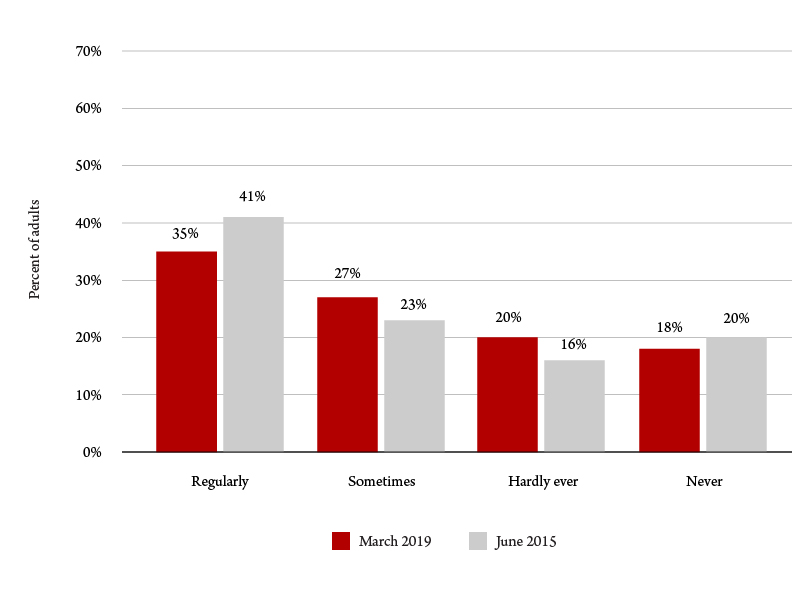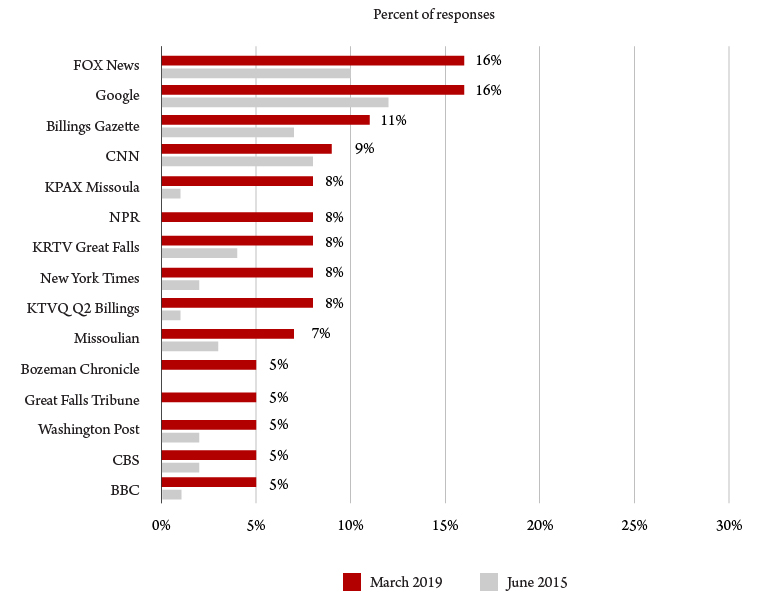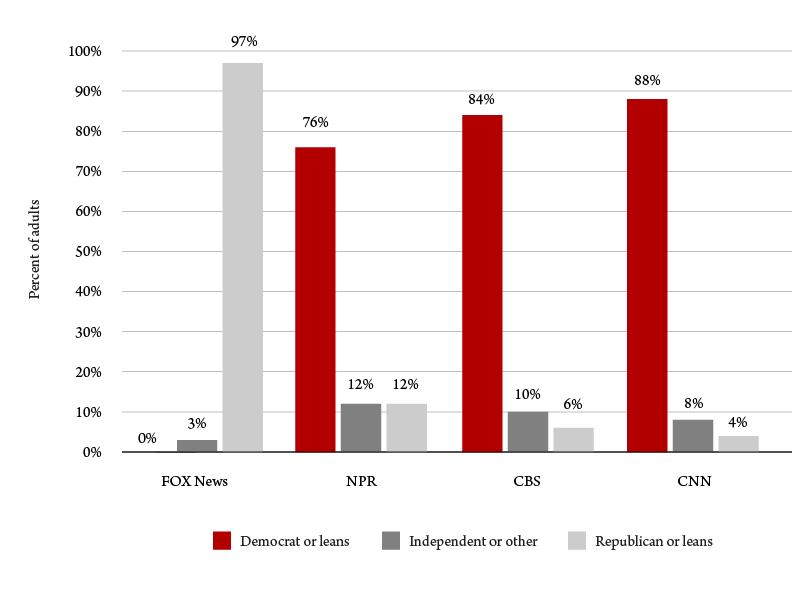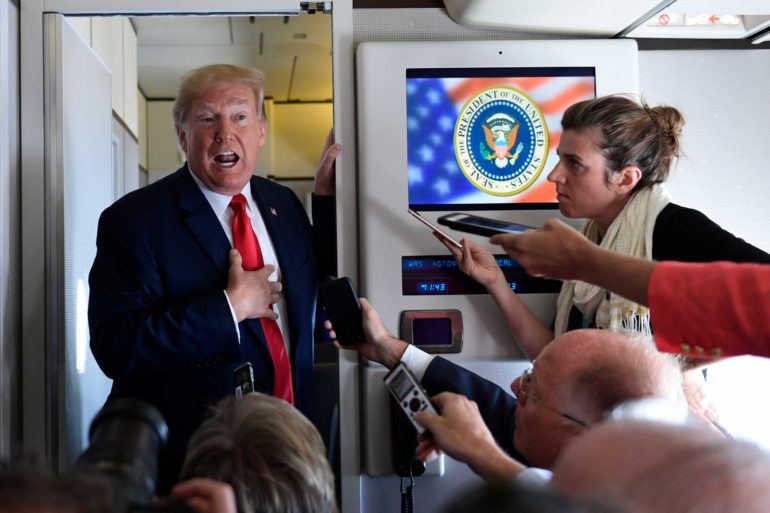The increasingly common news alerts on smartphones and tablets signal more than just another story that’s waiting to be read – they also signal that Montanans have moved into the mobile device phase of the digital media age. That’s one of the important findings from the latest Greater Montana Foundation survey on news media preferences.
This shift in how we get information has a number of important implications for us as citizens, voters and consumers of news and information. For those in Montana’s media industry it’s certainly worth a moment of reflection – how is news content consumed and what will be their future business model?
This was the third such study by the Greater Montana Foundation on how Montanans use media to stay informed and what issues they see as most important. It was crafted and analyzed with the assistance of the nationwide polling firm of Public Opinion Strategies, who conduct the well-known NBC News/Wall Street Journal public opinion polls, and administered by the Bureau of Business and Economic Research at the University of Montana.
It confirmed several trends, but also revealed some new and somewhat surprising specific findings. Among the results:
- More Montanans are paying attention to the news.
- Ninety percent of Montanans now say they have internet access, and internet provided news and social media are driving a proliferation of news sources that complement more traditional sources, such as broadcast television, radio and print newspapers (Figure 1).
- Nearly 70 percent of Montanans say they get at least a portion of their news from the internet or social media, although other traditional sources remain very important.
- Almost 60 percent of Montanans say they use a mobile device more than a computer to access online sources (Figure 2).
- This combination of more available sources and mobile access has caused declines in the regular consumption of traditional news sources, such as nightly national television news programs, Montana newspapers and local broadcast news (Figure 3).

Figure 1. Do you have internet access at your home? Source: Greater Montana Foundation, BBER, 2019 News Media Preferences and Issues Survey. 
Figure 2. Do you get more of your online news using a computer or mobile device? Source: Greater Montana Foundation, BBER, 2019 News Media Preferences and Issues Survey. 
Figure 3. How often do you watch broadcast network TV news? Source: Greater Montana Foundation, BBER, 2019 News Media Preferences and Issues Survey. 
Figure 4. Which sources did you use to get most of your news in the past week? Source: Greater Montana Foundation, BBER, 2019 News Media Preferences and Issues Survey.
However, also significantly:
- Montanans are paying more attention to news source credibility – and they rate local news sources as more credible than national news sources (Figure 5).
- Among the top-ranked internet website news sources cited by respondents, seven of the top 15 were local or Montana news outlet sites (Figure 8).
- Among news sources rated as most trustworthy, Fox News comes out on top. NPR ranked second with half as many respondents. Roughly the same number stated voluntarily in their belief that all news is biased or should not be trusted (Figure 9).
- Views of national news source credibility were highly correlated with political party affiliation (Figure 10).
- There has been a sharp increase in respondents saying they sometimes share internet news stories or social media items to influence others (Figure 12).

Figure 5. How credible are the following types of news sources? Source: Greater Montana Foundation, BBER, 2019 News Media Preferences and Issues Survey. 
Figure 6. How often do you read a Montana daily newspaper? Source: Greater Montana Foundation, BBER, 2019 News Media Preferences and Issues Survey. 
Figure 7. How often do you watch local TV news? Source: Greater Montana Foundation, BBER, 2019 News Media Preferences and Issues Survey. 
Figure 8. What are the one or two websites you use most frequently for news and information? Source: Greater Montana Foundation, BBER, 2019 News Media Preferences and Issues Survey. 
Figure 9. What specific news source do you consider the most trusted source of information? Source: Greater Montana Foundation, BBER, 2019 News Media Preferences and Issues Survey. 
Figure 10. Trust in news sources is sharply divided by political party. Source: Greater Montana Foundation, BBER, 2019 News Media Preferences and Issues Survey. 
Figure 11. How often do you access a social networking site? Source: Greater Montana Foundation, BBER, 2019 News Media Preferences and Issues Survey. 
Figure 12. Would you say you sometimes share a news item on the internet to influence others? Source: Greater Montana Foundation, BBER, 2019 News Media Preferences and Issues Survey.
There is much to consider from these findings. Do we have confidence in the news media and our institutions of government? Is the political polarization we see in the United States due to a lack of trusted news providers or is it caused by partisan news sources – or is it a bit of both?
A hopeful sign is the continuing trust and reliance by Montanans on local news sources. There are a number of media owners, managers and reporters in our communities who are committed to providing solid information about a range of topics important to our daily lives. In doing so, they earn our trust and keep their audience, which is a good model for all media.
On the business front, the growing use of the internet and mobile devices has already disrupted the industry. We continue to see newspapers with popular websites and reporters who post to their own channels or social media feeds. Television and radio stations are sharpening their content too, which is now streamed or archived online.

The longer-term questions yet to be answered include a number about journalism education and the business economics of all this.
What implications does a changing media landscape and declining trust in the media have on the education of future journalists? A number of journalism schools, including the School of Journalism at the University of Montana, have merged their print and broadcast programs and begun to emphasize new media as part of their curriculum – these include courses in podcasting, web editing and design, online journalism and social media. Beyond these trends, are there other ways journalism schools could help students build credibility for the organizations they go to work for after graduation?
Finally, can the media industry sustain itself with its current advertising model? Some have turned to subscription models, while others have pursued more controversial forms of advertising, such as native advertising where paid ads and content match the look and feel of stories found in their social media feeds and websites.
Whatever the future holds, let’s encourage more exploration of these trends, questions and potential implications.
You can view the full survey here.


